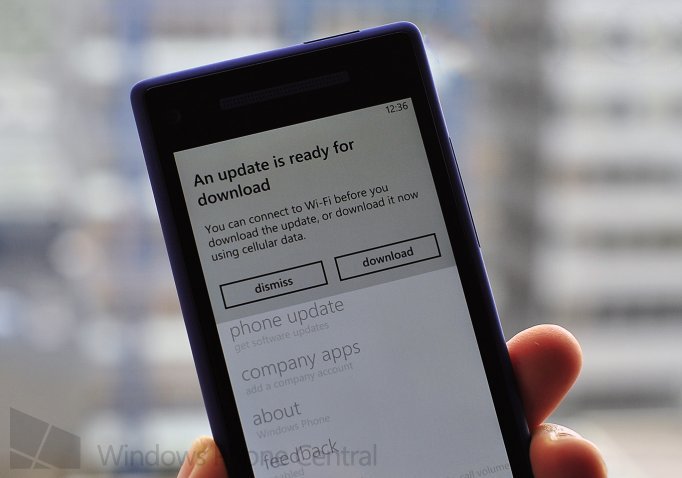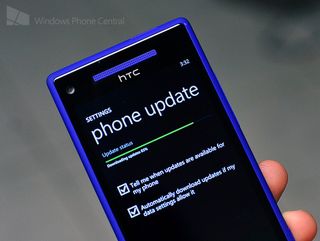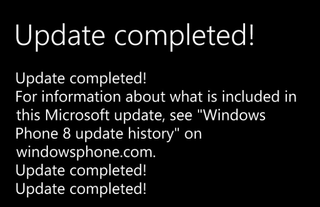Windows Phone 8 OS update - when can the rest of us expect it?

Last night we broke the story about the international version of the HTC 8X receiving the Windows Phone 8 OS 10211 (Portico) update, which included a fix for the rebooting issue and some new features as well.
Of course the majority of you with Nokia Lumias or branded 8Xs are probably frantically checking to see if your update is ready too. So when should we anticipate it?
Unfortunately, we don’t have any specific dates for you—not yet at least. But past experiences and some common knowledge tell us that this will be a controlled, rolled out procedure. The reasons for that should be obvious but in case it’s not, let us explain.
Some history
With Windows Phone 8, over-the-air updates (OTA) are finally realized for the first time to deliver OS fixes and patches straight to a users phone with no syncing to a PC required. It’s a fascinating method that in theory will allow Microsoft to dynamically update our phones with either new firmware, OS patches or new features when necessitated. The problem is it’s brand new.
For those of you who remember on Windows Phone 7 when its first update (affectionately called ‘NoDo’) was released, it too was very staggered and slow, more so than the proceeding Windows Phone 7.5 ‘Mango’, requiring a few apologies from Microsoft. Even carriers got in on the blame game at the time. Part of that interruption was because the update system was novice and Microsoft was collecting diagnostic data for feedback—to see if was working or not.
Interestingly, it was estimated that nearly 50% of users were on Windows Phone 7.5 just one month after its release. That was a massive improvement from NoDo.
From what we understand, this update too will be staggered, at least initially (and not on the level of NoDo). This first update, pushed to non-branded HTC 8Xs, is a bit of a test bed for the company and they’re now anxiously reading your comments here and getting feedback from support forums, etc. What for? At least two reasons:
Get the Windows Central Newsletter
All the latest news, reviews, and guides for Windows and Xbox diehards.
- To see if anyone is having a problem getting the update e.g. freezes, failed loading, boot problems, etc.
- To see if this indeed fixes some of the problems it needs to address
That latter part may sound odd but there are a lot of variables going into a sudden reboot issue. As any software developer can tell you, you can internally test, test, test but it’s a whole different ballgame when that app goes “live” to the world. (Just ask our own thorough and fastidious Jay Bennett who is never surprised at the bugs our app faces in your hands).
In short, there are no guarantees that this update will fix everything it is meant too, though the chances of it doing so are quite high (the Windows Phone team wouldn’t push this if they weren’t confident in it). There are also the unintended consequences of patching a mobile OS, numerous times we may add, all over-the-air that need to be taken into account.
Types of OTA updates
As we've detailed earlier, Microsoft has planned Windows Phone 8 around numerous types of OTA updates, which we'll repost below:
OEM updates
- OEM code (drivers, customizations, QC code – modem and BSP changes (encrypted))
Microsoft updates
- Extra small – (<1MB) – i.e. cert changes, security updates
- Small – (<10BM) – i.e. diff and canonical changes – predominant MSFT update
- Medium – (TBD) – i.e. feature pack dot updates
- Large – 100+MB – i.e. Major update release (e.g. 7740 update) w/o language pack – uncommon
- X-Large – 150+MB – i.e. Major update release (e.g. 7740 update) with language pack – uncommon

What are the chances your phone getting this update?
We'd say very good. In Windows Phone circles, the role of carriers in allowing or blocking updates is a notorious source of contention. Often the carriers are seen as impeding the update process e.g. AT&T’s Tango update for the Focus 2 just a couple of weeks ago. Indeed, they are often the cause for delays but we think this update will be different. Why? Because it’s high priority. And yes, updates deemed critical by Microsoft do get prioritized, even by the carriers.
The Portico (10211) OS update is not just an optional feature-set to be added, like multiple MMS in Tango. Its main function at this point is to stop random reboots. That’s not something that Microsoft would put under the “optional” category for carriers but rather “critical”, making this something that users can expect to be getting. Sure, Microsoft has also tossed in some highly desired new features and if they can sneak those in with a critical update, even better for us. But at this point, fixing the OS is the main concern.

Our advice
There’s no need to frantically check for this OS update, as we fear many of you are now doing. For one, your device will notify you if and when your update is ready (it checks once every 24 hours every every few days). In fact, your best bet is to pay attention to our site or the Windows Phone Blog, who will announce more information when it becomes available.
Our guess is that we won’t see this update for a few more weeks through the carriers—some faster, some slower. But we should give Microsoft a little breathing room in case they need to tweak the OTA process, especially on their first run with it.
Oh and for those asking for an official change-log for these updates, it is our understanding that on the “finish” screen where it now repeatedly says “Update completed!” that repetition may be removed in future deliveries to provide exactly that information. So just consider it a placeholder for now.

Don't be these guys. Not until after Christmas.

Daniel Rubino is the Editor-in-chief of Windows Central. He is also the head reviewer, podcast co-host, and analyst. He has been covering Microsoft since 2007 when this site was called WMExperts (and later Windows Phone Central). His interests include Windows, laptops, next-gen computing, and wearable tech. He has reviewed laptops for over 10 years and is particularly fond of 2-in-1 convertibles, Arm64 processors, new form factors, and thin-and-light PCs. Before all this tech stuff, he worked on a Ph.D. in linguistics, performed polysomnographs in NYC, and was a motion-picture operator for 17 years.